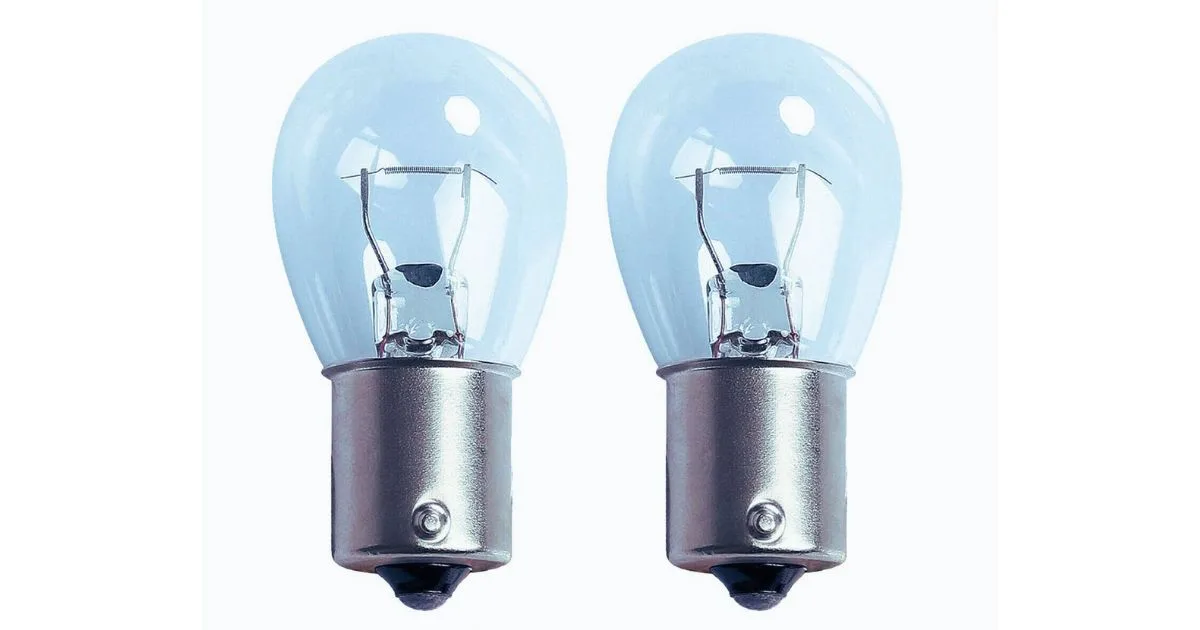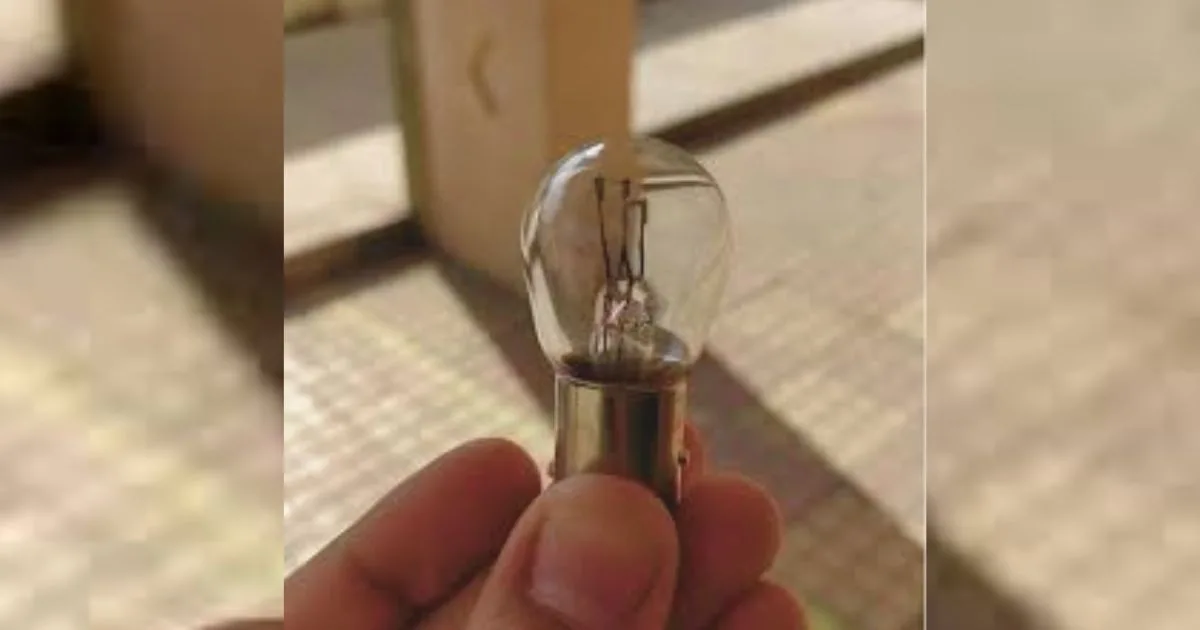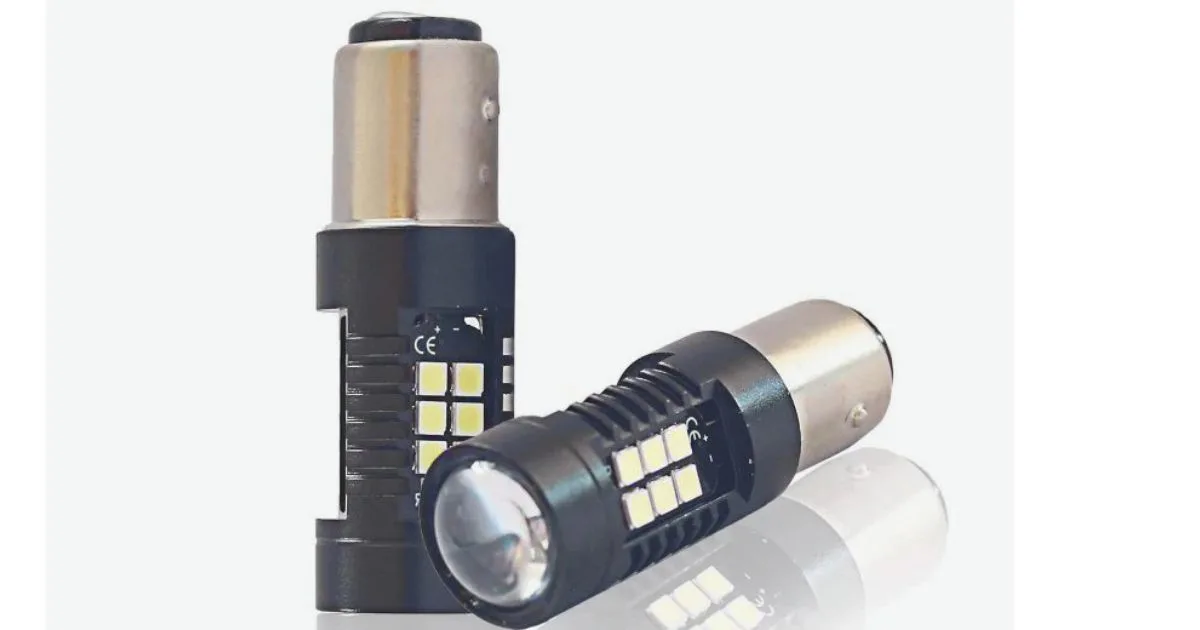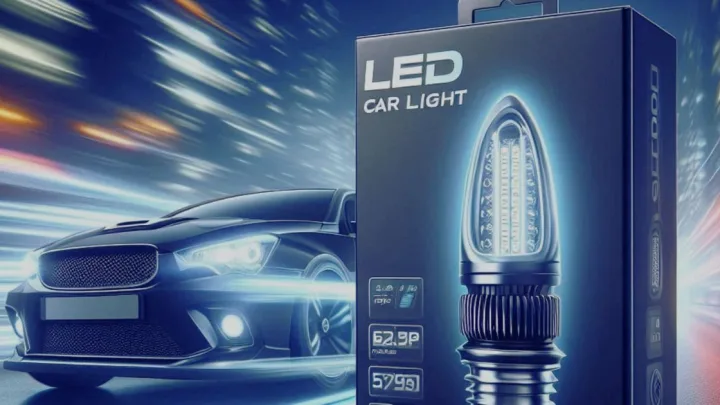Choosing the right car back light bulb ensures safety and visibility on the road. It's a small but critical choice for any driver.
Your vehicle's back lights, or taillights, do more than just illuminate; they communicate with other drivers about your actions. Selecting the best bulb isn't just a matter of brightness or style; it's about finding the perfect balance of longevity, performance, and compatibility with your vehicle.
As you look to replace or upgrade your car's back light bulbs, you might find the array of options overwhelming. It's not just about picking the brightest bulb. Consider factors like bulb type, longevity, and whether they are the right fit for your make and model. Good taillights are key to road safety; they signal your presence to other drivers during night drives or through bad weather. This guide will help you navigate the specs and features of different bulbs. It aims to equip you with the knowledge to make an informed choice, ensuring that your vehicle remains visible and you stay safe on the road.
Introduction To Car Back Light Bulbs
Choosing the right car back light bulb is crucial. It ensures safety while driving. Back light bulbs make your vehicle visible at night. They also signal your driving intentions. The right bulb provides reliability and visibility.
Importance Of Proper Illumination
Proper illumination is key to road safety. It helps drivers see and be seen. It reduces the risk of accidents. A bright, long-lasting bulb is essential. It makes sure you comply with road regulations.
Variety In Car Lighting Options
Cars have different lighting needs. Some need brighter bulbs, others longer-lasting ones. There's a vast selection of bulbs available. Choices include LED, halogen, and xenon bulbs. Each has its own benefits.
- LED bulbs: Energy-efficient, durable, and bright.
- Halogen bulbs: Cost-effective, easy to replace, and warm light.
- Xenon bulbs: Intense light, longer lifespan, but more expensive.
Types Of Car Back Light Bulbs
Choosing the right car back light bulb is crucial. It ensures safety and style. Let's explore the types of car back light bulbs available.
Halogen Bulbs
Halogen bulbs are common. They are
affordable and
easy to find. These bulbs use a filament. They get hot to produce light. Halogen bulbs last for about
1,000 hours.
- Widely available
- Cost-effective
- Easy to replace
Led Bulbs
LED bulbs stand for Light Emitting Diode bulbs. They are
energy-efficient. LED bulbs
last longer than halogen. They can shine for up to
20,000 hours.
- Energy-saving
- Long lifespan
- Bright light
Hid Xenon Bulbs
HID Xenon bulbs use gas to create light. They are
brighter than halogen and LED. These bulbs have a
long range. They can last
up to 2,000 hours.
- High brightness
- Long range
- Efficient
| Type |
Lifespan |
Key Feature |
| Halogen |
1,000 hours |
Affordable |
| LED |
20,000 hours |
Energy-efficient |
| HID Xenon |
2,000 hours |
Bright light |

Factors To Consider When Choosing Back Light Bulbs
Factors To Consider When Choosing Back Light Bulbs
Choosing the right back light bulbs is crucial for safety and visibility. Your vehicle's rear lights ensure that other drivers can see you at night and during poor weather conditions. To make an informed decision, consider several key factors before purchasing.
Brightness And Intensity
Brightness and
intensity are vital for back light bulbs. Brighter bulbs provide better visibility, making your vehicle more noticeable to others. Look for lumens as a measure of brightness. High lumens mean more light output.
Bulb Longevity
Long-lasting bulbs save time and money. Check bulb life expectancy, usually measured in hours. LED bulbs often last longer than halogen options. Choose bulbs that offer a balance of longevity and performance.
Compatibility With Your Vehicle
Ensure bulbs fit your vehicle model. Check your vehicle's manual for the correct bulb size and type. Incorrect bulbs may not work or could damage your vehicle's lighting system.
| Bulb Type |
Pros |
Cons |
| LED |
Bright, energy-efficient, long-lasting |
May be more costly |
| Halogen |
Cost-effective, widely available |
Shorter lifespan, less bright |
- Check lumens for brightness.
- Find bulbs with high hour ratings.
- Match bulb size to your vehicle.
The Role Of Lumens And Watts
Choosing the best car back light bulb involves lumens and watts. These terms are vital for brightness and energy use. Getting them right means better visibility and efficiency. Let's dive into understanding these key factors.
Understanding Lumens
Lumens measure light output. More lumens mean a brighter bulb. This is crucial for safe driving at night. You want a bulb that provides clear visibility without blinding others.
Balancing Watts And Efficiency
Watts tell us about energy consumption. Lower watts can mean less energy use. But, it's important to find a balance. You need a bulb that's bright enough yet energy-efficient.
Color Temperature And Visibility
Selecting the right car back light bulb involves understanding color temperature. A bulb's visibility can enhance safety during night drives.
Choosing The Right Color Temperature
Color temperature plays a big role in car back light bulbs. It's about how light looks. Think of color temperature like the color of your room lights. Some are warm, like a sunset. Others are cool, like daylight. For cars, this choice affects how you see at night. It's not just style. It's about safety and comfort too.
Impact On Night Driving Safety
Night driving safety improves with the right color temperature. Brighter isn't always better. Too bright, and it can blind other drivers. Not good. A moderate light helps you see well and keeps roads safe for everyone. This balance is key. Remember, the goal is clear visibility. It helps avoid accidents and keeps driving safe at night.

Legal And Safety Considerations
Legal And Safety Considerations
Choosing the right car back light bulb is crucial. It's about more than just visibility. It's about making sure you stay on the right side of the law. Bright and functioning tail lights are a must. They keep you and others safe on the road. Let's look at the legal and safety aspects to consider.
Compliance With Road Safety Regulations
Different areas have different rules for car lights. Always check local laws before buying. Your car's back light bulbs must meet these standards. If they don't, you could face fines. Even worse, you might not be as safe as you think. Make sure the bulbs match your car's make and model. They should also be the right color, usually red. And they should be bright enough to see, but not so bright they blind other drivers.
Ensuring Proper Installation
Installing a new bulb seems easy. But doing it wrong can lead to trouble. A loose bulb could fall out. A wrong bulb could overheat. Both are dangerous. Always follow the manufacturer's guide. Or, better yet, have a pro do it. They'll make sure it's done right. A correctly installed back light bulb means a safer drive for everyone.
Comparing Top Brands And Models
Choosing the right car back light bulb makes a big difference. Bright lights improve safety and look good. Many brands and models exist. Let's compare them.
Popular Brands Review
Several top brands stand out in the market:
- Philips - Known for durability.
- Osram - Offers bright light.
- Sylvania - Good for different cars.
These brands offer quality. But, each has its strengths.
What The Reviews Say
Customer reviews give real insight. They help us choose the best.
| Brand |
Strength |
Weakness |
| Philips |
Long life |
Cost more |
| Osram |
Very bright |
Hard to find |
| Sylvania |
Fit many cars |
Less bright |
Reviews guide us. They show what works best.
Installation Tips And Tricks
Car back light bulbs ensure safety during night drives. Choosing the right bulb is crucial. This section covers
installation tips and tricks.
Diy Installation Guide
Replacing car back light bulbs can be straightforward. Follow these steps for a smooth DIY installation:
- Turn off your car and open the trunk.
- Locate the bulb holder behind the back light cover.
- Remove the cover by unscrewing or pressing the clips.
- Take out the old bulb. Twist or pull it, depending on the holder.
- Insert the new bulb. Don’t touch the glass with bare fingers.
- Replace the cover and test the lights before driving.
When To Seek Professional Help
Some car models require special tools or have complex systems. In these cases, seek professional help:
- Complex assemblies: If the bulb is not easily accessible.
- Electrical issues: If other lights have problems too.
- Lack of tools: If special tools are needed for the job.
Professional mechanics ensure correct installation. They avoid damage to your vehicle's electrical system.
Maintenance And Care For Longevity
Maintenance and Care for Longevity are crucial for your car's back light bulbs. Well-maintained bulbs shine brighter and last longer. Let's dive into how regular checks and troubleshooting can save you time and money.
Regular Checks And Cleaning
Consistent maintenance keeps car back light bulbs in top shape. Check bulbs monthly. Look for dimming or flickering. These are signs to take action. Clean the covers too. Dirt and grime reduce light output.
- Turn off your car before inspection.
- Use a soft cloth for cleaning.
- Replace bulbs in pairs for even lighting.
Troubleshooting Common Issues
Face common bulb issues with confidence. Dim lights often mean a dying bulb. A non-working light could be a blown fuse. Check your vehicle's manual for specific fuse locations and bulb types.
| Issue |
Possible Cause |
Quick Fix |
| Bulb Flickering |
Loose Connection |
Secure the bulb |
| Dim Light |
Old Bulb |
Replace Bulb |
| No Light |
Blown Fuse |
Replace Fuse |
For persistent issues, consult a professional. Proper maintenance ensures safety and visibility on the road.

Cost Versus Performance
Cost Versus Performance
When choosing a car back light bulb, cost and performance are key. It's tempting to save money, but remember, better performance often comes with a higher price tag. Let's find out how to balance these factors for the best outcome for your vehicle.
Investing In Quality
Quality bulbs shine brighter and last longer.
Premium bulbs may cost more upfront, but they offer better
visibility and durability. This means fewer replacements and a safer driving experience. Consider
lifespan and
lumens (light output) when comparing options.
Finding The Best Deals
Good deals are out there, you just need to know where to look. Start with
online retailers and
auto parts stores. Check for
sales and
bulk discounts. Compare prices across different sellers. Remember to factor in
warranty and
return policies.
| Bulb Type |
Cost |
Performance |
Lifespan |
| Halogen |
Low |
Good |
Shorter |
| LED |
Higher |
Excellent |
Longer |
| HID |
High |
Very Good |
Long |
Use the table above to compare bulb types. Match your
needs and
budget to find the best fit.
Conclusion: Making An Informed Decision
Selecting the right car back light bulb is crucial for safety and visibility. This post aimed to simplify the process.
Recap Of Key Takeaways
- Check vehicle manual for bulb type.
- Consider bulb brightness and longevity.
- Review regulations and compatibility.
- Opt for quality brands for better performance.
Final Thoughts On Smart Illumination
Choose bulbs that enhance visibility without blinding others. Smart illumination options offer benefits like energy efficiency and longer life spans. Trust reputable brands and prioritize safety features. Make a wise choice to ensure a safer driving experience.
Frequently Asked Questions
What Factors Affect Car Back Light Bulb Choice?
Choosing the right car back light bulb depends on bulb type, vehicle model, brightness, color temperature, and longevity. Consider LED for efficiency and halogen for cost-effectiveness. Ensure compatibility with your car's make and model for optimal performance.
How Do Led And Halogen Bulbs Differ?
LED bulbs offer longer lifespan, better energy efficiency, and quicker illumination compared to halogen bulbs. However, halogen bulbs are often more affordable and easier to replace. Your choice should align with your priorities: longevity and performance versus initial cost.
Can Upgrading Back Light Bulbs Improve Safety?
Yes, upgrading your car's back light bulbs can enhance safety. Brighter bulbs improve visibility, allowing other drivers to see your vehicle more clearly at night or in poor weather conditions. Consider bulbs that offer a balance between brightness and longevity for the best results.
What Is The Average Lifespan Of A Car Back Light Bulb?
The lifespan varies by bulb type. LED bulbs can last up to 25,000 hours, while halogen bulbs typically last between 450 to 1,000 hours. Choosing a bulb with a longer lifespan can reduce the frequency of replacements.
Conclusion
Choosing the right car back light bulb is vital for safety and visibility. Bright, long-lasting bulbs ensure a clear view on the road. They also let others see your vehicle better. Quality matters for durability, so pick a reliable brand.
Think about brightness, energy use, and bulb life. Your car deserves the best fit; don't guess which bulb to buy. Check the manual or ask an expert. Safe driving starts with the right light. Remember, a smart choice today means a brighter, safer drive every night.

 Factors To Consider When Choosing Back Light Bulbs
Factors To Consider When Choosing Back Light Bulbs
 Legal And Safety Considerations
Legal And Safety Considerations
 Cost Versus Performance
Cost Versus Performance